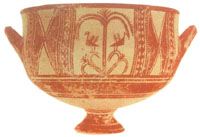 |
An
ancient cap also found in the area. Cups similar to this can be found in
museums all over Europe and the United States. Many ancient treasures were
illegally exported and sold to many countries after the 1974 Turkish
invasion.
Click photo to enlarge
|
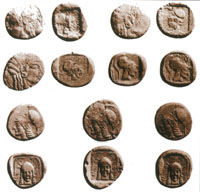 |
Another
sample of the wealth of the people living in the area is the large numbers
of ancient coins found. Golden coins were very common, but also silver and
copper ones were found in the area.
Click photo to enlarge. |
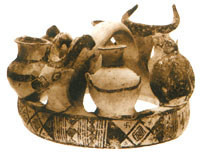 |
An
ancient religious instrument found in excavations in Lambousa. Very often
people used to find ancient vases or other things during their daily
activities in the fields. The whole area was very rich and densely
populated since the ancient times.
Click photo to enlarge. |
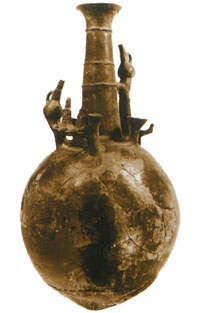 |
Pots like
the one depicted here were used for holding wine, olive oil or water.
Lapithos was also known for the quality of the olive oil that was produced
there. This is a small sample of the treasures found in the city. After
the Turkish invasion many of the treasures were smuggled abroad. They can
be found in museums all over Europe, but mainly in England and France, as
well as in the United States. Many were also sold to private collectors.
Click photo to enlarge. |
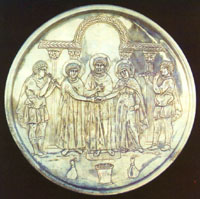 |
A silver
plate found in Lambousa. In
627 AD, the Byzantine Emperor Heraclius (610-641), fought the Persian
general Raztis in single combat and beheaded him. Afterwards, having
compared his victory with that of David against Goliath he issued some
commemorative silver which is today known as the David plates. They were
found in about 1900 in two stages in the vicinity of Lambousa and
eventually having been split up into four, ended up in the museums of
Nicosia, New York, Washington and London. Obviously they were buried in
haste just before the Arab pirates arrived. These silver vessels, of which
the largest depicted David against the giant Goliath, are regarded as
among the finest examples of the art of the early Byzantine era. Since
most of them bore imperial control stamps, they were closely dated as
being from the years 627-630 AD.
Click photo to enlarge. |




